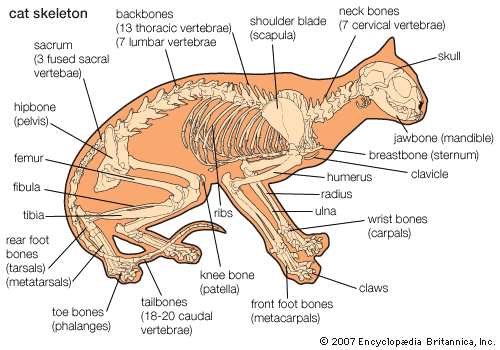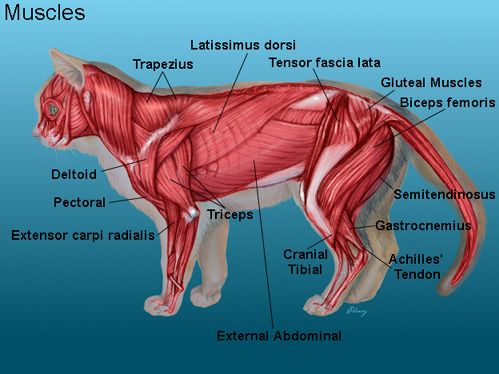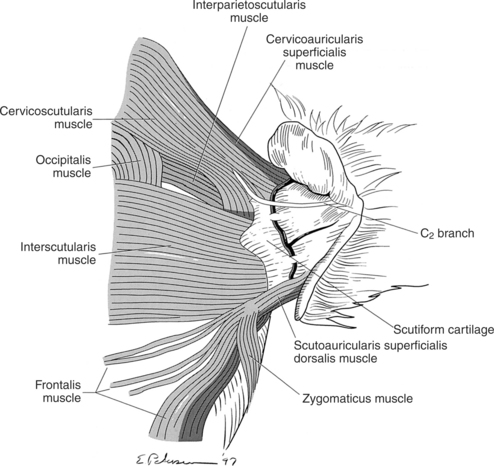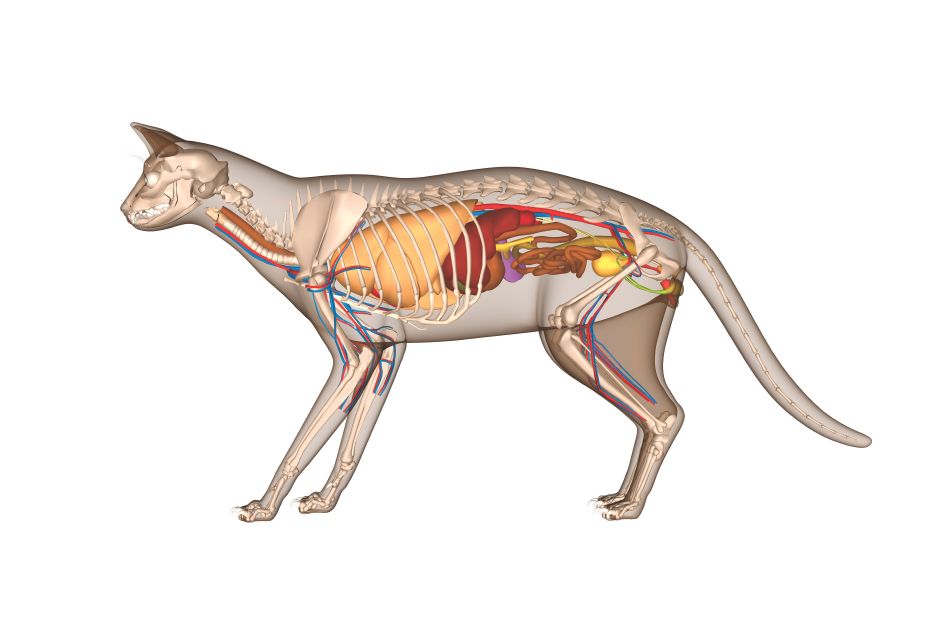With all the petting, cuddling, and playing, we seldom have time to think about the anatomy of our feline friends.
Many of us live with our pets for years without knowing how they are designed. After all, a huge percentage of the world’s population doesn’t even know their own anatomies in the first place.
Understanding your kitty’s anatomy is not only fascinating but it helps you better take care of her.
If you are interested in learning more about your feline friend, here’s information about the number of muscles a cat has.
Cat Anatomy

Source: Britannica
The skeleton of a cat is similar to a human’s in so many ways. Both species have a well-formed jaw and skull, seven cervical vertebrae, four appendages, and a vertebral column.
The obvious difference is size. A human’s skull is 20-25 times larger than that of a domestic cat. Also, ours is stronger than that of a feline.
Even with a much larger skeleton, we have 206 bones in total while our furry friends have 250 bones in their skeletons. The extra bones are located at the back and their responsibility is to give the kitty flexibility and agility. This is why a cat can twist, spring, turn, and assumes postures that would break a human’s back.
The tail also boasts 10% of all the muscles to help with balance as the kitty navigates narrow spaces and makes sharp bends.
A cat’s skeleton consists of 7 cervical vertebrae, 13 thoracic vertebrae, 22 or 23 caudal vertebrae (except for Manx and short-tailed cat varieties), and 3 sacral vertebrae.
The caudal vertebrae make the tail and are used by the kitty to counterbalance the body and perform quick movements.
The forelimbs are joined to the shoulder via free-floating clavicle bones. This is precisely the reason a cat can pass her body through any space that fits her head.
How Many Muscles Does A Cat Have?

Source: Pinterest
The feline muscular system is one of the biggest. It consists of tissue units that have the ability to contract and produce movement.
The muscles provide the framework for your furball’s athletic prowess and abilities.
In total, a cat has 517 muscles in its body. These are grouped into three different categories:
I. Skeletal Muscles
Also called striated muscles, skeletal muscles are voluntary and are used primarily for movement and posture. They are placed around the joints and attached to the bones.
Like a human’s system, skeletal muscles have biceps, triceps, trapezius, and deltoids.
Skeletal muscles account for approximately half the weight of the cat. They are used for things like walking, tail motion, eating, and eye movement.
II. Smooth Muscles
These are responsible for facilitating several processes in the body like the flow of blood by surrounding arteries and the transportation of food along the gut.
They are found mostly in the walls of hollow organs such as the stomach, heart, blood vessels, and intestines.
Smooth muscles are involuntary which means they are controlled by the autonomic nervous system.
III. Cardiac Muscles
As the name suggests, cardiac muscles are found around the feline’s heart. They operate like skeletal muscles in that they are striated but they are not under voluntary control.
Ear Muscles

Source: Veterian Key
64 of all cat muscles are located in the ears (32 in each ear). Compare that to only 6 muscles in each of our ears and you can understand why cats have directional hearing.
If you are keen you will notice your kitty moving one ear independently of the other one. This mobility allows the feline to point her ears in a different direction from her body.
When a cat is frightened or alarmed, she will move her ears backward to listen to a sound coming from behind her or whichever. The direction of the ear also accompanies her hissing or growling.
Fun Fact: A cat can turn her ears 180 degrees.
What Are Cat Muscles Used For?
Each individual muscle is made up of myriad cells attached together by connective tissue.
Skeletal muscles are joined to the bones by elastic tendons. As the muscles contract, they pull on the tendons which consequently pull the cat’s bones and cause the legs to move.
The muscles have blood supply from blood arteries and vessels around them. A rich capillary gives the muscle oxygen which in turn helps the cat with endurance training and other high-energy performances.
In essence, the primary function of the muscles is to move one or all parts of a cat’s body. They are also used to stabilize your kitty’s joints and prevent them from collapsing under a load. Smooth muscles further propel food and maintain the continence of the bladder.
Closing Thoughts
From jumping up to a height of 1.6m to navigating narrow pathways to being incredibly agile, a kitty is an interesting pet.
Along with other parts of the body, muscles help give her these abilities. The next time your cat’s behavior blows your mind, just know that she’s truly endowed and blessed.
Related Posts:

Hi! I am Eleanor Price. I started this website after my cat, Louie, almost died from a case of botulism (a type of food poisoning often caused by bacteria that grow on food items). Turned out that my cat’s diet was the problem. I have made it my duty to provide the best information and recommendations about everything cat lovers need to know about their felines’ health and wellbeing. My goal is to find the most informative content on anything feline-related and share it with fellow hardworking kitty lovers.

